During the winter months, it is important to consider the impact of cooler weather on equine management practices. Often, horses acclimate well to cold temperatures, and are typically maintained well outdoors. Special considerations should be given to horses’ nutritional needs and overall maintenance to ensure they maintain good health and welfare in the cooler months. For more information on how to manage horses or other equids during winter months, contact your local Extension office, veterinarian, or state equine specialist.
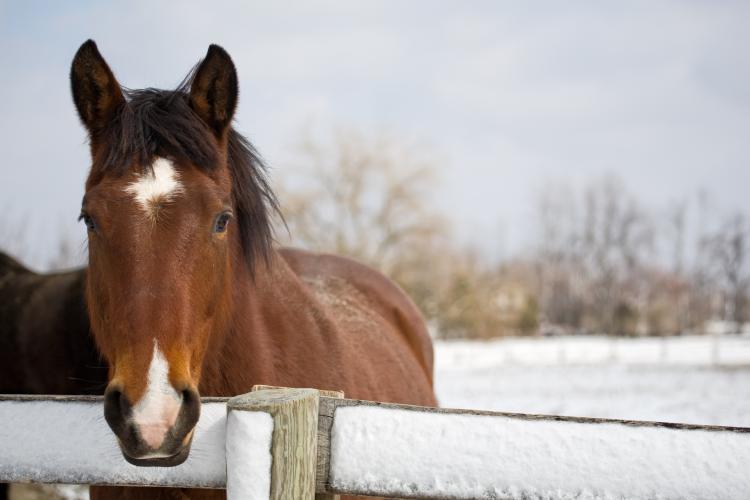
Provide Adequate Forage
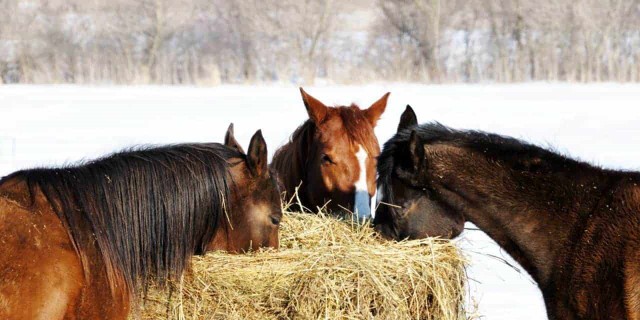
Low temperatures, high winds and precipitation can increase the amount of energy horses need per day in order to maintain body temperature. It is best to provide additional good quality forage to the horse during colder weather. Fermentation of fiber within the forage produces heat, which helps to keep the horse warm. Ideally, most horses should consume between 2-2.5% of their current body weight per day. Supplementation with grain or concentrate may be needed when a horse is having difficulty maintaining weight or body condition. Check horse's body condition approximately every 4 weeks to ensure horses are not gaining or losing too much weight. For information on how to assess horse's body condition, or developing a nutritional plan, contact your local Extension office.
Photo credit: Photo.com
To Blanket or Not to Blanket?
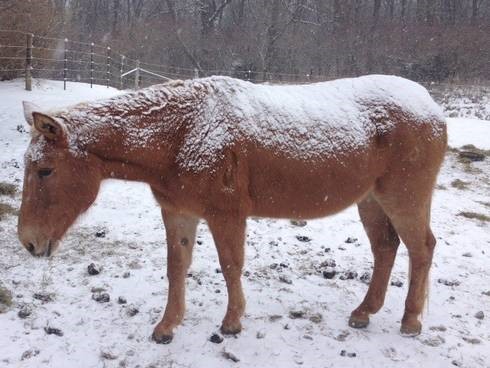
In some instances, a blanket may be used to help the horse maintain body temperature, but often horses are blanketed due to owner preference. Horses that have acclimated to the climate, have a good hair coat, and have access to shelter and adequate forage usually will not need to be blanketed, as shown in the image. Circumastances where a blanket may be needed include: very old or very young horses, horses with a BCS of 3 or less, the horse has been body clipped, or has not acclimated to the cold, or if the horse will become wet. Additionally, if there is no available shelter and the wind chill will drop below 5 degrees Farhenheit, a blanket may be needed.
Photo credit: Mighigan State Extension
Shelter
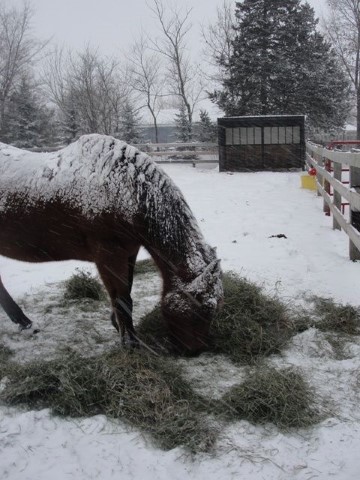
Horses should have free access to shelter at all times. Without wind, horses can tolerate temperatures at or below 0 degrees Fahrenheit, but most horses are most comfortable between 18-59 degrees F. Even when shelter is available, horses may choose not to utilize it, despite times when it would appear logical to do so. Shelter can be man-made in the form of a shed, run-in, or barn, or natural, such as a treeline. Ensure shelter is large enough to accomodate all horses to prevent any horses from being excluded due to herd hierarchies. Constructed shelters should allow for 150 square feet per horse.
Image credit: University of Minnesota Extension
Winter Water
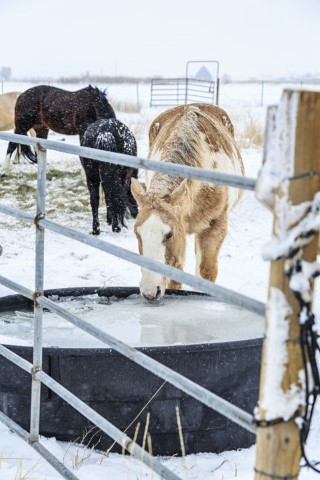
Despite horses having a higher water intake requirement per day in cold ambient temperatures, colder water temperatures can reduce how much horses will drink per day. On average, a 1000-pound horse will consume approximately 10-12 gallons of water per day, but this amount can vary greatly depending on the horse’s diet, activity level, and general health. Make sure water troughs or buckets are defrosted at least twice a day and let horses drink their fill during these times. Also, if using an electric water heater, make sure to keep the cord and other hazards away from curious horses. It is also important to remember that snow and ice are not adequate sources of water intake for horses.
Photo Credit: University of Minnesota Extension
Body Temperature
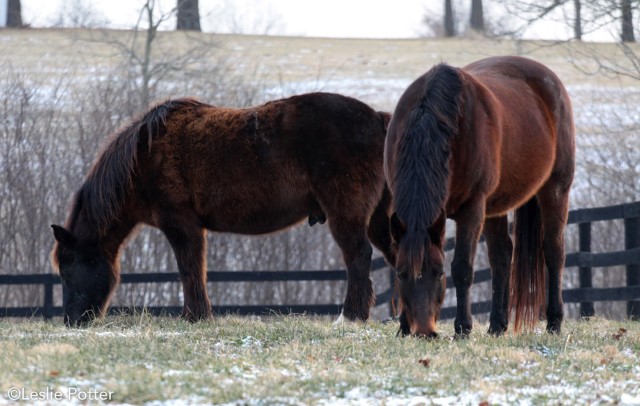
A horse’s winter hair coat does an excellent job of insulating from the cold winter temperatures. Horses will continue to develop a winter coat until December 22 (winter solstice) in conjuction with shorter days, and will shed their winter coat as the days become longer. The haircoat insulates the horse by trapping and warming air next to the body. Wet or muddy haircoats can reduce the insulating ability, and reduce the horse's ability to stay warm. Make sure to provide horses with access to shelter that serves as a wind break and cover from precipitation.
Photo credit: Horse Illustrated